Arupadai Veedu Murugan Temples | Six Abodes of Lord Murugan
Arupadai Veedu, also known as the Six Abodes of Murugan, are six sacred temples dedicated to Lord Subrahmanya, a Hindu deity. These temples are located in the Indian state of Tamil Nadu and are considered highly significant in Hindu religious and cultural traditions.
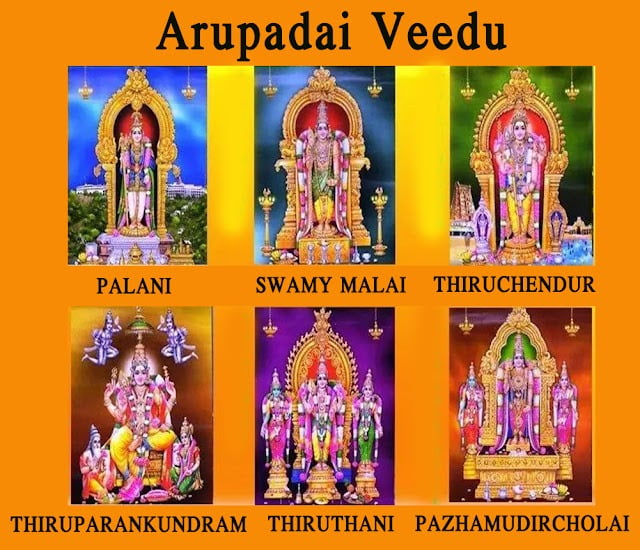
Contents
- 1 Who is lord Murugan:
- 2 The six temples of Arupadai Veedu are:
- 3 The story of the six faces of Murugan:
- 4 You may also like to check other temples:
- 5 FAQ:
- 5.0.1 What is Arupadai Veedu?
- 5.0.2 Which are the six Arupadai Veedu temples?
- 5.0.3 What are the different forms of Murugan represented in the Arupadai Veedu temples?
- 5.0.4 Why are the Arupadai Veedu temples important?
- 5.0.5 What are some of the festivals celebrated at the Arupadai Veedu temples?
- 5.0.6 How can I visit the Arupadai Veedu temples?
Who is lord Murugan:
Lord Murugan, also known as Kartikeya, Skanda, Subrahmanya, or Shanmukha, is a prominent deity in Hinduism, particularly in the South Indian tradition. He is considered the god of war, victory, wisdom, and knowledge. Lord Murugan is the son of Lord Shiva and Goddess Parvati.
According to Hindu mythology, Lord Subrahmanya was born to vanquish the demon Surapadman and protect the gods and humanity. He is depicted as a youthful and powerful deity, often portrayed with six faces and twelve arms, symbolizing his mastery over the six senses and his ability to accomplish multiple tasks simultaneously.
Lord Murugan is associated with several symbols and attributes. He is usually depicted holding a spear or lance known as the Vel, which represents divine power and the ability to conquer evil. He is also often depicted riding a peacock, which is his divine vehicle.
Devotees worship Lord Subrahmanya for various reasons, including seeking protection, wisdom, and success in their endeavors. His temples, particularly the Arupadai Veedu mentioned earlier, are significant pilgrimage sites. Skanda Shashti, a six-day festival dedicated to Lord Murugan, is celebrated with great fervor in many parts of South India.
Lord Kartikeya is revered not only in Hinduism but also in other religious traditions of the Indian subcontinent, such as Buddhism and Jainism. He is regarded as a divine figure embodying virtues like bravery, valor, and spiritual enlightenment.
The six temples of Arupadai Veedu are:
Thiruthani:
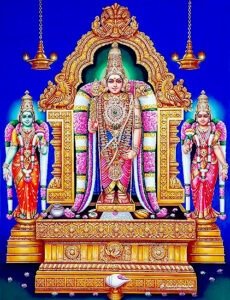
Thiruthani is a town located in the Tiruvallur district of the Indian state of Tamil Nadu. It is situated approximately 84 kilometers away from Chennai, the capital city of Tamil Nadu. Thiruthani is famous for the presence of the ancient Thiruthani Murugan Temple, dedicated to Lord Kartikeya, one of the prominent deities in Hinduism. Devotees visiting the Thiruthani Murugan Temple often climb a flight of 365 steps leading to the temple complex. The number of steps represents the days of the year. The climb is considered a spiritual practice and a way to seek blessings from Lord Subrahmanya.
Palani:
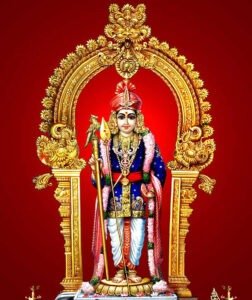
Situated in Palani town, this temple is renowned for its idol of Lord Murugan, which is made of Navapashanam, a nine-herb combination with medicinal properties. It is believed to have been created by the sage Bogar. Palani is located in the Dindigul district of Tamil Nadu, India. The temple is situated on the slopes of the Palani Hills and is reached by a series of steps or by a funicular railway. The main shrine of the temple houses a murti of Murugan in the form of a six-headed child (Shasta). Palani Temple also has a number of other shrines dedicated to other Hindu deities, including Ganesha, Vishnu, and Shiva.
Swamimalai:
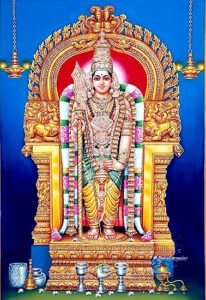
This temple is located in Swamimalai, near Kumbakonam. It is believed to be the place where Lord Subrahmanya imparted divine knowledge to his father, Lord Shiva. The presiding deity here is in the form of a child, and the temple is known for its educational significance. One of the unique aspects of the Swamimalai Murugan Temple is the significance given to education and learning. Lord Murugan, in his role as the teacher, is believed to have expounded the meaning of the sacred syllable “Om” to Lord Shiva at this very spot. Devotees believe that worshipping at this temple can bestow knowledge, wisdom, and academic success.
Thiruparankundram:
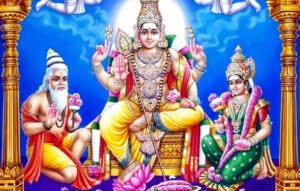
Situated near Madurai, Thiruparankundram is a hill temple dedicated to Lord Kartikeya. It is believed to be the place where Lord Murugan married Deivanai, another one of his consorts. The temple is known for its rock-cut architecture and historical significance. The Thiruparankundram Murugan Temple is believed to be one of the oldest temples in Tamil Nadu, with its history dating back more than 1,500 years. The temple is famous for its rock-cut architecture and intricate sculptures. It is carved out of a single rock and features various mandapams (halls), shrines, and pillared corridors.
Pazhamudircholai:
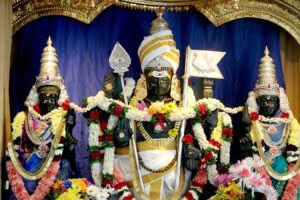
This temple is located on a hill in the outskirts of Madurai. It is believed to be the place where Lord Subrahmanya resided after his wedding with Deivanai. The temple is surrounded by dense forests and is known for its natural beauty. The temple is nestled amidst dense forests and offers a tranquil and picturesque setting for devotees. Pazhamudircholai literally translates to “fruit-laden hill,” and the temple gets its name from the belief that Lord Murugan, as a child, was once found here playing with divine fruits.
Thiruchendur:
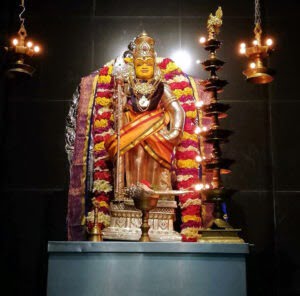
Situated on the shores of the Bay of Bengal, Thiruchendur is a popular temple dedicated to Lord Murugan. It is believed to be the place where Lord Kartikeya defeated the demon Surapadman. The main deity of the temple is Lord Kartikeya, depicted with his consorts, Valli and Devasena. The idol of Lord Subrahmanya in the sanctum sanctorum is seen in a standing posture, holding a Vel (spear) in one hand. The temple complex also houses several other shrines dedicated to various deities, including Lord Shiva and Goddess Parvati.
Pilgrims often undertake a journey to visit all six temples as part of their religious practice and devotion to Lord Murugan. These temples are significant centers of worship and attract devotees from all over the world.
The story of the six faces of Murugan:
The story of the six faces of Lord Murugan is an intriguing aspect of his mythology. According to the legend, once there was a cosmic event known as the “Tarakasura Vadham” or the killing of the demon Tarakasura. The gods approached Lord Shiva and Goddess Parvati to give birth to a powerful warrior who could defeat the demon.
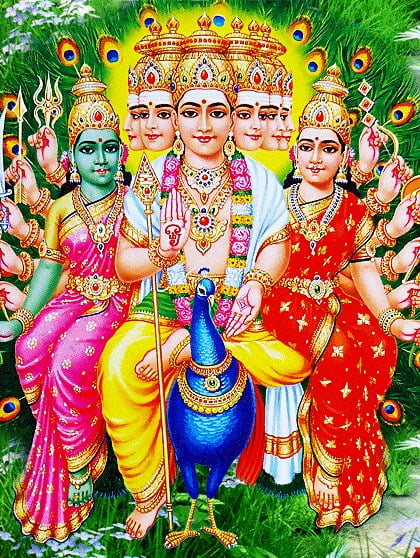
In response to their plea, Lord Shiva and Goddess Parvati combined their divine energy, and a divine spark emerged from their union. This spark split into six parts and was divided among the six Krittikas, the six celestial nymphs who cared for the child.
Each Krittika nurtured and raised one face of Lord Murugan, resulting in him having six faces. These faces are believed to represent different aspects of his personality and powers. The six faces of Lord Subrahmanya are:
Lord Murugan’s main face represents his divine beauty and radiance. It symbolizes his grace and captivating appearance.
The face of Lord Murugan’s Nandi, the divine bull, represents his association with the animal kingdom and his role as the protector of animals.
The face of Lord Murugan’s Chandra, the moon, represents his association with the celestial realm and his role as the ruler of time.
The face of Lord Murugan’s Surya, the sun, represents his association with light, energy, and power. It symbolizes his ability to dispel darkness and ignorance.
The face of Lord Murugan’s Agni, the fire, represents his association with purification and transformation. It symbolizes his ability to burn away negativity and purify the soul.
The face of Lord Murugan’s Vayu, the wind, represents his association with movement, swiftness, and freedom. It symbolizes his ability to swiftly navigate through challenges and obstacles.
Each face of Lord Murugan embodies unique qualities and powers, making him a multi-faceted deity. It reflects his divine nature and his ability to manifest different aspects of himself to fulfill various purposes. The six faces of Lord Kartikeya exemplify his divine attributes and signify his all-encompassing presence.
You may also like to check other temples:
Kanipakam Varasiddhi Vinayaka Swamy,
Tirumala Tirupati Venkateswara Swamy,
Twelve Sacred Jyotirlingas of Lord Shiva and
Shakti Peethas: The Power of Shakti.
FAQ:
What is Arupadai Veedu?
Arupadai Veedu is a Tamil phrase that means “six abodes”. It refers to the six adobes of Lord Murugan, the Hindu god of war and victory. These temples are located in Tamil Nadu, India, and each one represents a different aspect of Murugan’s life.
Which are the six Arupadai Veedu temples?
The six Abodes of Lord Murugan are:
- Thiruparankunram: This temple is located on a hillock on the outskirts of Madurai. It is the first of the Arupadai Veedu temples, and it is where Murugan married Indran’s daughter Deivanai.
- Swamimalai: This temple is located on a hill in Thanjavur district. It is where Murugan defeated the demon Surapadman.
- Thiruchendur: This temple is located on the coast of Tamil Nadu. It is where Murugan killed the demon Soorapadman.
- Palani: This temple is located in the Palani Hills. It is where Murugan is said to have appeared to his mother Parvati.
- Thiruthani: This temple is located in the Thiruthani Hills. It is where Murugan is said to have performed penance to please Shiva.
- Thirukolur: This temple is located in Thiruvallur district. It is where Murugan is said to have killed the demon Tarakasura.
What are the different forms of Murugan represented in the Arupadai Veedu temples?
Each of the Arupadai Veedu temples represents a different aspect of Murugan’s life. The following table shows the different forms of Kartikeya represented in each temple:
| Temple | Form of Murugan |
|---|---|
| Thiruparankunram | Skanda |
| Swamimalai | Murugan with six faces |
| Thiruchendur | Murugan with twelve faces |
| Palani | Murugan with six faces and twelve hands |
| Thiruthani | Murugan with six faces and three eyes |
| Thirukolur | Murugan with six faces and four arms |
Why are the Arupadai Veedu temples important?
The Arupadai Veedu temples are important to Hindus because they are said to be places of great power and blessing. Devotees visit these temples to pray for Murugan’s blessings, such as protection, success, and prosperity.
What are some of the festivals celebrated at the Arupadai Veedu temples?
The Arupadai Veedu temples celebrate a number of festivals throughout the year. Some of the most important festivals include:
- Skanda Shashti: This festival is celebrated on the sixth day of the month of Karthigai. It is a day to celebrate the birth of Murugan.
- Thaipusam: This festival is celebrated on the full moon day of the Tamil month of Thai. It is a day to commemorate Murugan’s victory over the demon Surapadman.
- Thirukarthigai: This festival is celebrated on the full moon day of the Tamil month of Karthigai. It is a day to celebrate Murugan’s marriage to Deivanai.
How can I visit the Arupadai Veedu temples?
The Arupadai Veedu temples are all located in Tamil Nadu, India. They are easily accessible by road, rail, and air.
If you are planning to visit the Arupadai Veedu temples, it is a good idea to do some research in advance. This will help you to plan your trip and make the most of your visit.tunesharemore_vertadd_photo_alternate
